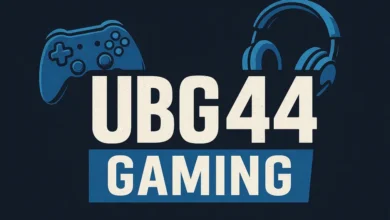How to Be a Gimkit Host – Step-by-Step Tutorial

Introduction to Gimkit and its benefits
Are you ready to transform your classroom or virtual learning space into an exciting and interactive environment? Meet Gimkit, the game-based learning platform that’s sweeping through schools like wildfire. Whether you’re a teacher looking to motivate students or a host wanting to make learning fun, becoming a Gimkit host is your ticket to engaging educational experiences.
With its unique blend of competition and collaboration, Gimkit helps learners absorb concepts while having a blast. Imagine turning mundane review sessions into thrilling games where students can earn points and compete against each other—all with just a few clicks! If you’re curious about how to harness this powerful tool for your purposes, let’s dive into the step-by-step tutorial on how to become an effective Gimkit host. Get ready for some serious fun in teaching!
Step 1: Creating a Gimkit account
To become a Gimkit host, the first step is to create your account. Head over to the Gimkit website and click on “Sign Up.”
You can choose to sign up using your email or connect through Google, making it quick and straightforward. After entering your details, you’ll receive a verification link in your inbox. Click that link to activate your account.
Once you’re in, take a moment to explore the dashboard. Please familiarize yourself with the interface; it’s user-friendly and designed for easy navigation. This initial setup will pave the way for all future gameplay sessions.
Don’t forget to customize your profile! Adding a profile picture can make interactions more personal and engaging when hosting games with students or friends. Remember, this is just the beginning of an exciting journey as a Gimkit host.
Step 2: Setting up your first game
Once you’ve created your account, it’s time to dive into setting up your first game. Start by selecting the “Create Game” option on your dashboard. This is where the fun begins.
You’ll see various formats available, such as classic mode or team mode. Choose one that fits the vibe of your group. Each format offers a unique play style and dynamics, so think about what might resonate best with your players.
After choosing a format, you’ll have options for customizing gameplay. You can set timers and adjust point values based on how challenging you want the questions to be.
Don’t forget to select an appropriate difficulty level for the audience you plan to engage! Whether they’re seasoned pros or newcomers will influence how much fun everyone has in this interactive learning experience.
Step 3: Customizing your game settings
Customizing your game settings is where the fun begins. Tailor everything to fit your audience and make the experience interactive. Please start by selecting a game mode that resonates with players, whether it’s classic or collaborative.
Next, adjust the timer for each question. A shorter time can ramp up excitement, while a longer one allows thoughtful responses. Consider enabling power-ups, too; they add an extra layer of strategy.
Don’t forget about adjusting player limits. Depending on your group size, you might want to allow more participants for larger classes or events.
You can also incorporate sound effects and visuals to enhance engagement. These features keep players entertained and immersed in the gameplay.
Think about privacy options if you’re hosting students or younger audiences—protecting their identities should always be a priority! With just a few tweaks here and there, you’ll create an unforgettable experience tailored specifically for your players.
Step 4: Adding questions and answers
Adding questions and answers is where the magic happens in Gimkit. This step allows you to tailor your game content to meet your players’ needs.
Start by thinking about what topics will engage your audience. Consider their age, interests, and current curriculum, if applicable. You want them excited to answer!
Next, create clear and concise questions. Ambiguity can lead to confusion, so aim for straightforward wording. Mix-up question types—multiple choice, true/false, or fill-in-the-blank can all add variety.
Don’t forget about the answers! Ensure they are accurate and relevant to avoid frustrating players. It’s also a good idea to include some distractors that sound plausible but aren’t correct; this adds an extra layer of challenge.
Test your questions before launching the game. A quick review helps catch any errors or confusing phrasing that could hinder gameplay enjoyment.
Step 5: Launching your game and managing players
Once you’ve set everything up, it’s time to launch your game. Click the “Start” button and watch as excitement fills the room. Players will receive a unique join code, making it easy for them to enter your game.
As everyone joins, you’ll have access to real-time updates on player progress. This feature allows you to keep an eye on how they’re performing while also ensuring that no one is left behind.
Engagement is key. Encourage players to communicate and strategize as they tackle questions together. You can even create friendly competition by highlighting top performers or issuing fun challenges throughout the session.
If any technical issues arise or if players need assistance during the game, be ready to jump in quickly. Your responsiveness can make all the difference in maintaining a smooth gaming experience.
Tips for being a successful Gimkit host
To shine as a Gimkit host, preparation is key. Familiarize yourself with the platform to navigate effortlessly during your game.
Engage players by incorporating diverse question types. Mix in multiple-choice, true/false, and fill-in-the-blank options to keep things fresh.
Encourage friendly competition among participants. Highlight top performers while ensuring everyone feels included. A little encouragement can spark enthusiasm.
Consider timing carefully. Set a pace that challenges players but keeps them engaged without feeling rushed or overwhelmed.
Be adaptable during gameplay. If you notice confusion over certain questions, be ready to clarify or adjust on the fly for smoother play.
Gather feedback after each session. Understanding what worked well and what didn’t will help refine future games for an even better experience next time around.
Conclusion
Gimkit has become a popular tool for educators and group leaders looking to make learning fun. By hosting games, you can uniquely engage players while fostering knowledge retention.
Setting up your account is straightforward, and customizing the game allows you to tailor the experience to fit your audience’s needs. Adding questions can be as creative as you’d like—think about what will excite or challenge your players.
When launching your game, managing participants effectively keeps everyone involved and on their toes. Remember that being an effective host means creating an environment where players feel motivated to learn without feeling overwhelmed.
With these steps under your belt, you’re well-equipped to take on the role of a Gimkit Host successfully. Keep exploring new strategies and enjoy facilitating dynamic educational experiences along the way!



